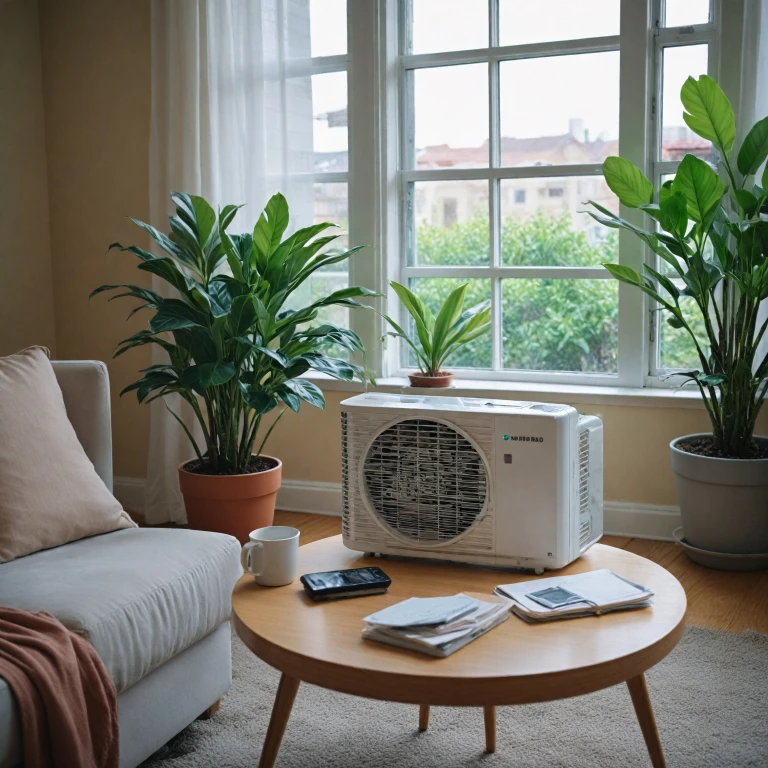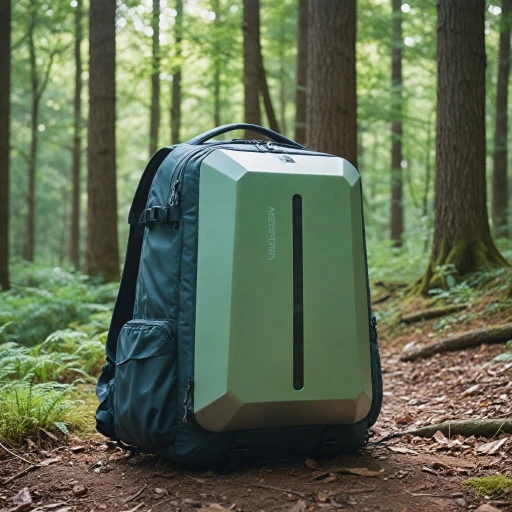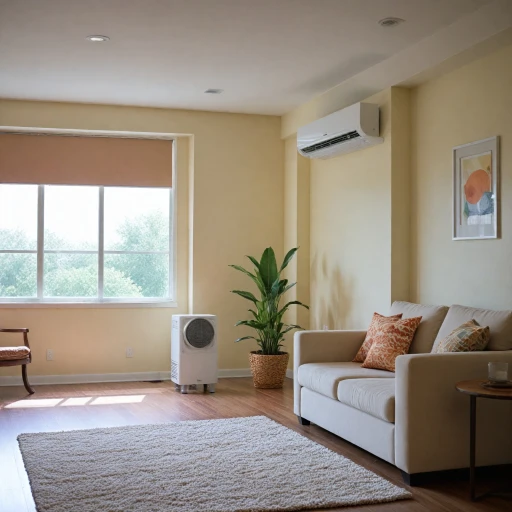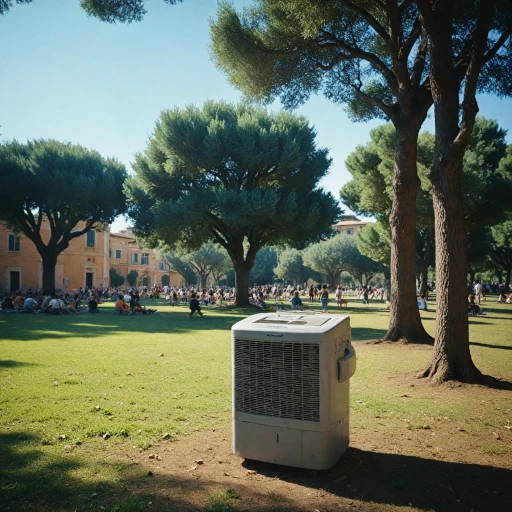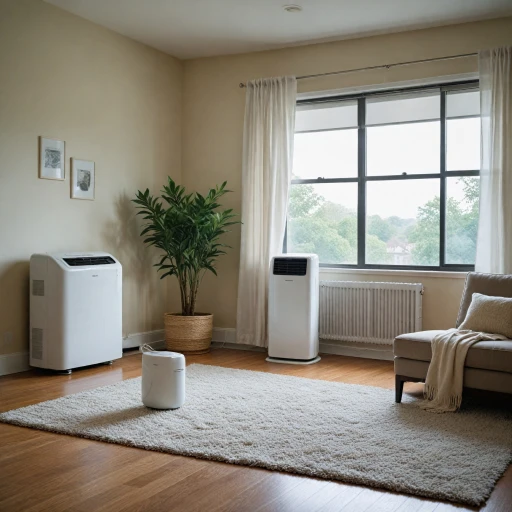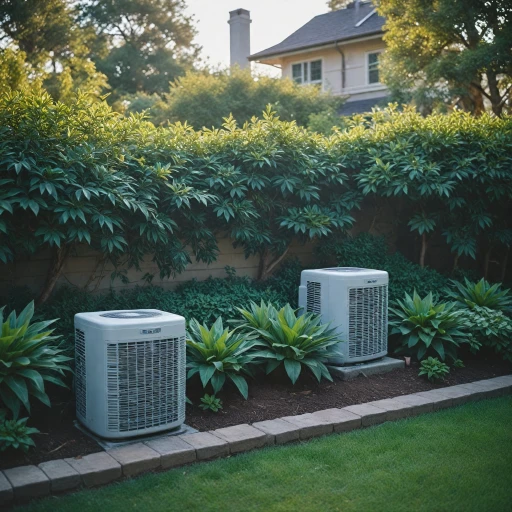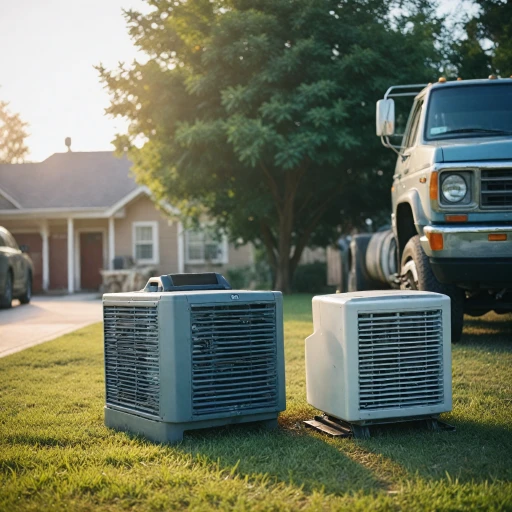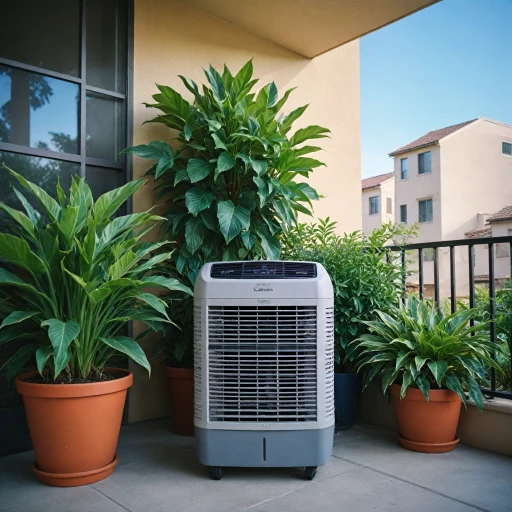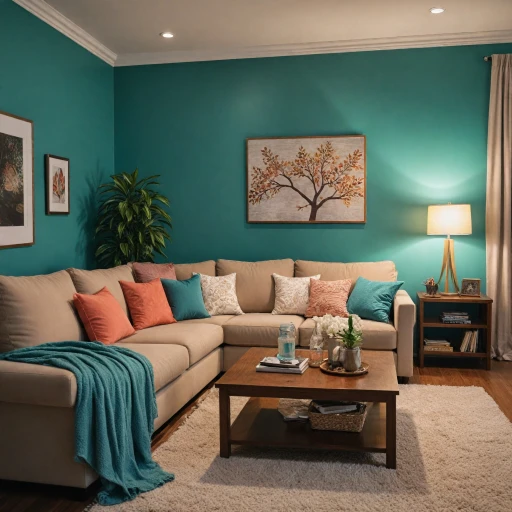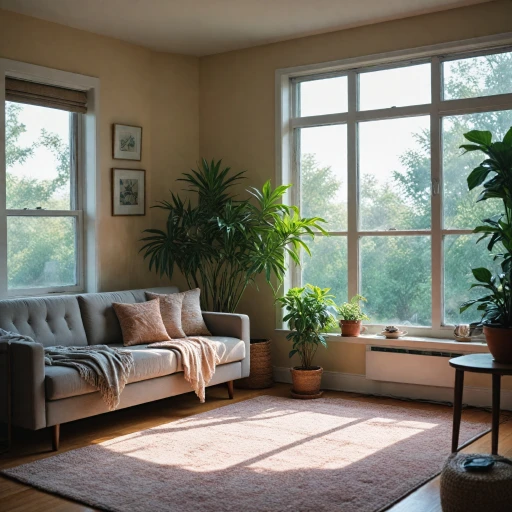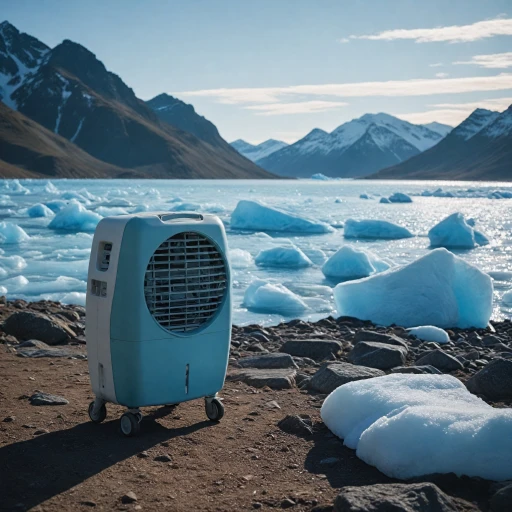
Understanding Portable AC and Heat Units
The Basics of Versatile Cooling and Heating Units
In recent years, portable air conditioners have gained popularity for their convenience and adaptability. These compact units offer more than just cooling; they double as heaters, providing year-round climate control. Understanding their functionality is essential when exploring portable AC and heat units.
A portable air conditioner operates by removing heat and humidity from a room, channeling it through an exhaust hose, usually vented out a window. Some units offer additional features like dehumidification, enhancing comfort.
These units are measured in BTU (British Thermal Units), indicating the device's capacity to cool a room effectively. Models might feature dual hose systems, improving efficiency by simultaneously drawing in and expelling air, unlike single hose variants.
Moreover, many devices come with remote control options, sleep mode settings, and programmable timers, offering seamless operation. The choice between different BTU ratings, such as the ASHRAE and the newer SACC standards, can significantly impact cooling performance, and it's essential to pick the right one for your room size.
Despite their convenience, potential users should weigh the advantages against limitations like noise levels and price. Portable air conditioners, such as those from brands like Black Decker, are often more affordable than mini split systems but might not match their efficiency and conditioning capabilities.
Key Features to Look For
Key Aspects to Consider When Shopping for Portable AC Units
When it comes to choosing the right portable air conditioner, a few key features can significantly impact your decision. Below, you'll find crucial aspects to keep in mind that can enhance your cooling experience.- BTU and Coverage Area: The British Thermal Unit (BTU) rating of a portable air conditioner indicates its cooling capacity. A higher BTU becomes essential for larger spaces, as it ensures efficient cooling. Consider both the BTU ASHRAE and the more precise BTU SACC ratings when evaluating a unit's capacity. Matching the BTU with your room size will optimize the cooling effect.
- Cooling Technology: Options such as single-hose and dual-hose units can determine airflow efficiency. While single-hose units draw air from the room, the dual-hose design offers more consistent cooling by using one hose to expel warm air and another to bring in fresh air.
- Functionality: Many portable air conditioners serve multiple purposes, acting as a heater, fan, or conditioner dehumidifier. Models like the conditioner heater offer seasonal versatility, providing heating during cooler months.
- Remotes and Controls: Remote controls are a handy feature for adjusting temperature settings and modes such as sleep mode, which reduces noise and maintains a comfortable temperature throughout the night.
- Energy Efficiency: Choosing models that promise better energy efficiency can lead to savings in long-term price, both in terms of electricity bills and overall environmental impact. A good comparison with other climate control options is essential.
- Easy Installation and Versatility: Most units are easily installed through a window using an exhaust hose, making room air adjustments accessible without restructuring your home.
- User reviews: Checking user reviews and experiences can provide insights into long-term reliability and operational quirks, informing your purchasing decision.
Installation and Maintenance Tips
Essential Installation and Maintenance Tips for Your Portable AC
Setting up and maintaining your portable air conditioner can be straightforward if you follow some key tips. Keeping your portable unit efficiently running not only ensures a comfortable environment year-round but also extends the longevity of your investment.
Proper Placement and Installation
One of the first steps in setting up your portable AC is finding the right spot in your room. Ideally, place the unit near a window for easy access to venting, as most portable air conditioners come with either a single hose or dual hose for expelling warm air outside. Additionally, ensure there is no obstructive furniture that might impede airflow from both the unit's intake and exhaust hose.
Window Vent Kits
Utilizing a window vent kit is crucial for properly connecting the exhaust hose to your window. This part of the installation ensures that the hot air is expelled outdoors, optimizing the cooling capacity of the unit in your room. Make sure that the window seal is as tight as possible to prevent hot air from seeping back indoors.
Regular Maintenance
- Filter Cleaning: Dust and debris can accumulate on your unit’s filter. Regular cleaning or replacing it ensures efficient operation. A neat, unclogged filter can enhance performance and energy efficiency.
- Drainage: Portable units often have a built-in dehumidifier which collects excess moisture. Check the water pan or drainage hose frequently, especially in humid conditions, to prevent overflow.
- Exterior Cleaning: Keep the exterior of your air conditioner clean. Dust it regularly and avoid using abrasive cleaners that could damage the surface.
Control and Efficiency
Many units come with a remote control for easy operation, allowing you to adjust settings without having to walk over to the unit. Features like sleep mode can help control airflow at night while keeping noise levels to a minimum. Additionally, monitoring the BTU rating ensures your air conditioning unit matches the room size, saving energy and reducing costs.
By adhering to these installation and maintenance tips, your portable air conditioner can offer both efficient cooling and heating, making it a versatile addition to your home climate control solutions.
Comparing Portable Units to Other Climate Control Options
Contrasting Portable AC and Heat Units with Other Systems
When it comes to cooling your room efficiently, various options are available, each with its own advantages and drawbacks. Here's a breakdown of how portable air conditioners and heaters stack up against other climate control systems. Window Units Window air conditioners are a popular choice due to their affordability and efficiency in cooling specific spaces. However, they require a window for installation, which potentially limits room aesthetics and natural lighting. In contrast, portable units can be easily moved and don't obstruct the view outside or make window usage cumbersome. Mini Split Systems Mini split air conditioning systems offer an efficient and quiet operation but come with a significantly higher price tag. Installation can be complex, involving a professional to set up the indoor and outdoor units. Although portable ACs may not match mini splits in terms of long-term efficiency, their lower initial cost and ease of installation can be appealing for budget-conscious consumers or those renting a living space. Central Air Conditioning If you have central air conditioning in your home, you might appreciate the even distribution of cooled or heated air throughout the home. However, central systems are less energy-efficient for cooling individual rooms and can drive up energy bills. Portable ACs and heaters offer localized cooling and heating, which can be more energy-efficient and cost-effective for single-room use. Fan and Dehumidifier A fan can help to circulate air but lacks the cooling effect of an air conditioner. Meanwhile, a dehumidifier does remove moisture but does not provide cooling or heating. Portable AC units often come with a built-in dehumidifier function, combining both air conditioning and moisture control, making them a versatile solution that goes beyond simple air movement or humidity reduction. Efficiency and Performance Considerations When evaluating options, the BTU (British Thermal Units) rating, such as BTU ASHRAE or BTU SACC, can provide insights into the cooling power of an air conditioner. Dual hose portable models usually offer better cooling performance compared to single hose units. Furthermore, advanced models include features like sleep mode and remote control for enhanced usability and comfort. In conclusion, choosing the right climate control unit depends significantly on your specific needs, room size, and budget. Reviews and user experiences can offer valuable insights into the performance and reliability of each system, as discussed in the next section.Energy Efficiency and Cost Considerations
Examining Energy Efficiency In Portable Air Conditioners
Portable air conditioners boast numerous advantages, but a critical consideration is their energy efficiency, especially when compared to other climate control options. Recent advances have led to significant improvements in the efficiency levels of these units. Here's what you need to keep in mind when assessing the energy efficiency and cost implications of a portable air conditioning unit.- BTU Ratings and Efficiency: The BTU (British Thermal Unit) rating indicates the cooling capacity of an air conditioner. A portable air unit with a higher BTU rating might cool a larger room more efficiently but can also consume more power. It's important to match the BTU rating to your room size appropriately. While a BTU ashrae rating gives an idea of a unit's capacity, a btu sacc rating often offers a more realistic view of its efficiency in actual conditions.
- Energy Star and EER: Look for Energy Star-certified portable air conditioners. These units use around 10% less energy than conventional models. The Energy Efficiency Ratio (EER) is another indicator, calculated by dividing the BTU rating by the unit's wattage. Higher EER values equate to greater energy efficiency.
- Dual vs Single Hose Design: These designs also play a vital role in energy consumption. Dual hose portable air conditioners offer better efficiency compared to single hose models by minimizing indoor air loss. They usually consume less power for the same cooling capacity, a critical factor in long-term room conditioning.
- Cost Implications: While the initial price of energy-efficient models might be higher, the operational savings can outweigh these initial costs over time, making them a wise investment. Moreover, by using a unit with a programmable or remote control, users can manage cooling more effectively, further optimizing energy usage.
- Other Factors: Additional features such as sleep mode and timer controls can enhance a unit’s practicality by reducing unnecessary energy consumption when full cooling isn't required. Furthermore, modern models often come with dehumidifier functions that can save energy in humid climates, as dry air is easier to cool.
User Experiences and Reviews
User Experiences with Portable AC Units
When it comes to user reviews and experiences, portable air conditioners have a wide range of feedback, often influenced by personal needs and expectations. Here's a synthesis of what users typically share about these versatile units:- Cooling Efficiency: Many users appreciate the quick cooling capability of portable air conditioners, especially those with higher BTU capacity. They find units with features like dual hose systems or btu ashrae ratings provide more effective cooling for larger rooms. However, some note that units with a single hose might not be as efficient in extremely hot weather.
- Convenience and Flexibility: A significant number of users favor the convenience portable units offer, especially those equipped with wheels for easy maneuverability between rooms. Units with integrated heating and cooling capabilities are often praised during transitional seasons when the weather is unpredictable.
- Ease of Control: Models featuring remote controls or smart features that integrate with home automation systems receive positive feedback for their user-friendly nature. Features like sleep mode and timer settings are particularly appreciated for overnight use, where energy efficiency and quiet operation are key.
- Noise Levels: The noise of portable air conditioners can be a deal-breaker for some. While many models strive for quieter operation, some users find them to be louder than desired, which can be disruptive in quiet environments or during sleep.
- Maintenance Concerns: The ease of maintenance and installation is a commonly highlighted point. Users emphasize the importance of regular cleaning of filters and possible condensation management. Models with straightforward installation steps, such as those with well-designed exhaust hose systems, are generally preferred.
- Cost and Energy Use: Cost is a recurring theme in user discussions. While initial prices can be attractive, ongoing operating costs and energy efficiency significantly impact user satisfaction. Users who invest in energy-efficient models often report lower utility bills over time, despite a slightly higher upfront price.
